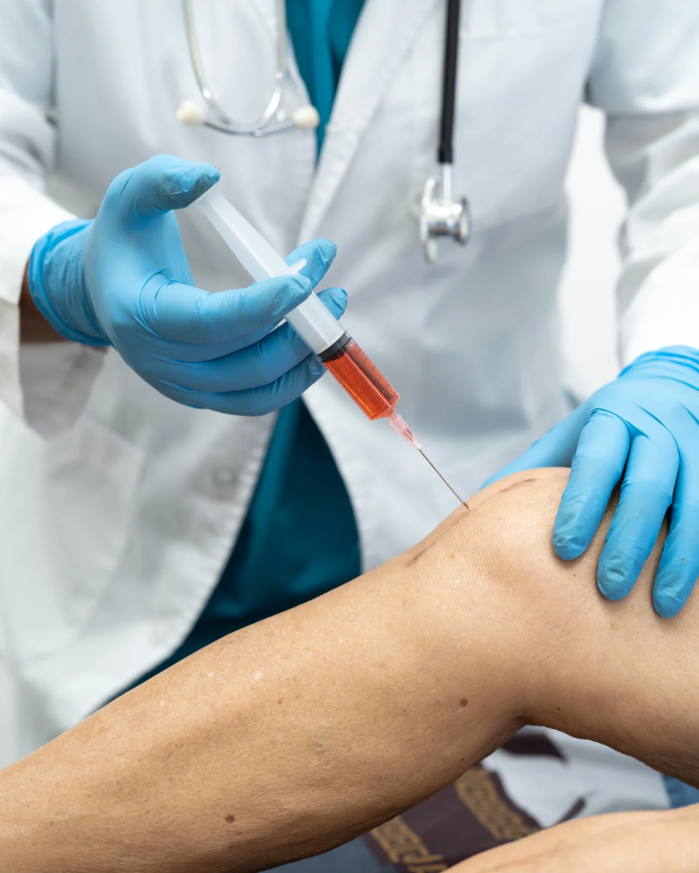The Centers for Advanced Orthopaedics is redefining the way musculoskeletal care is delivered across the region with locations throughout Maryland, DC, Virginia and Pennsylvania.
Platelet-Rich Plasma
Having joint and /or ligament pain that will not go away? Platelet-rich Plasma (PRP) may be an option for you.

What exactly is PRP and how does it work?
- Platelet-rich plasma therapy uses injections of a concentration of a patient’s own platelets to accelerate the healing of injured tendons, ligaments, muscles, and joints. The concept of PRP has been around since 1970.
- One to a few tubes of a patient's own blood is taken through a centrifuge to concentrate the platelets. Once these platelets are concentrated and active, they are then injected into the injured or diseased body tissue. This will release growth factors that stimulate and increase the number of reparative cells in the body. Ultrasound imaging is sometimes used to guide the injection.
What population can benefit from receiving PRP? Those with these conditions could possibly benefit from PRP:
- Torn tendons
- Tendinitis
- Arthritis
- Joint injuries
- Hair loss
Who are not good candidates for PRP?
- An individual with low platelet function and/or count
- Anemia
- Cancer
- History of infections
Benefits for receiving PRP injections?
- PRP lacks research even though it has been around since 1970. Research states that PRP can help stimulate the healing process, decrease pain, stiffness, and allow an individual to return to activities sooner.
- In osteoarthritis patients, PRP has shown to decrease pain and stiffness by modulating the joint environment.
When receiving any type of medical treatment, you need to be aware of the risks. Here are some risks that PRP may have:
- Dehydration
- Bleeding
- Tissue Damage
- Infection
- Nerve Injuries
How much does it cost?
- Each injection can cost anywhere from $600-$2000. You may have insurance coverage for PRP, so it is important to ask and make sure before paying out of pocket.